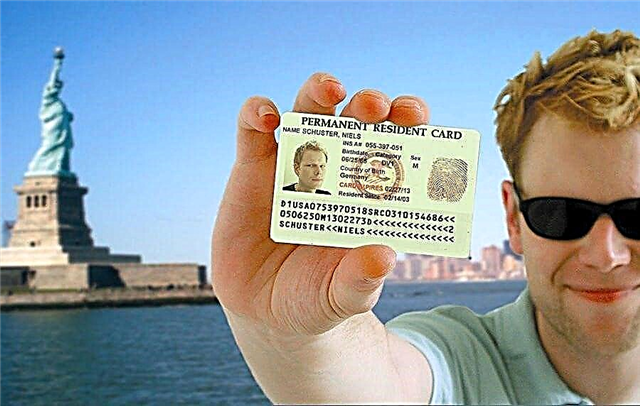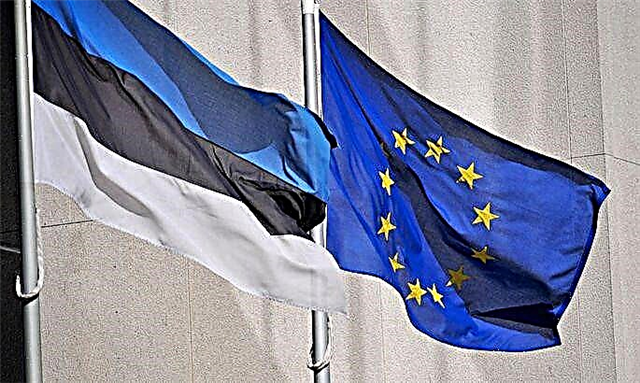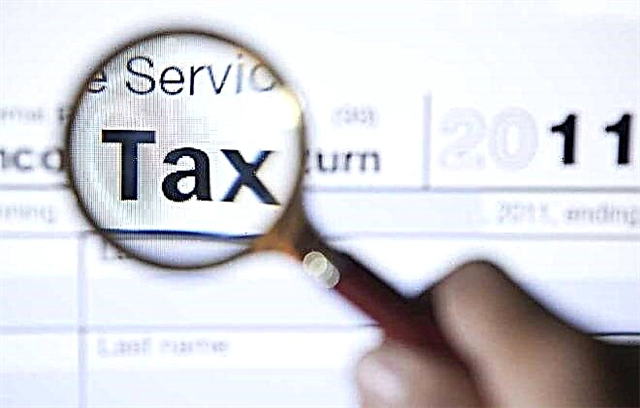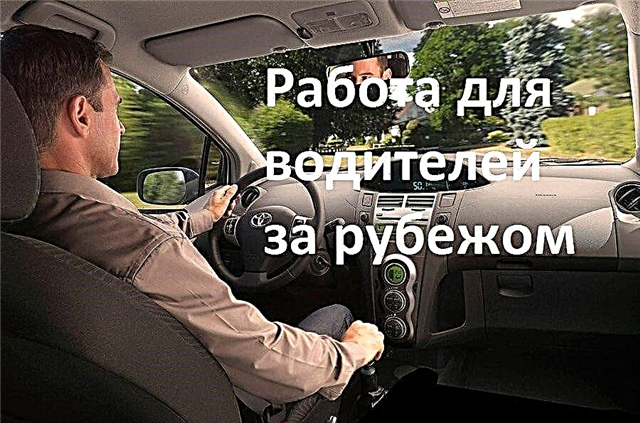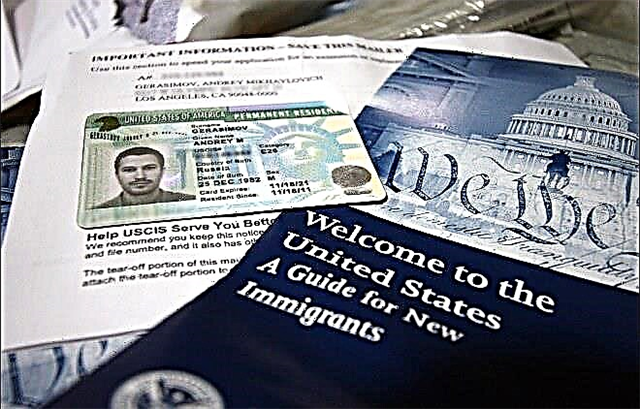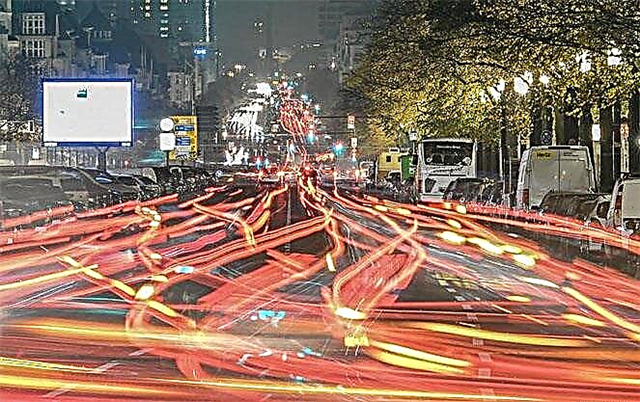Going to Germany on your own transport or planning to use a rented car in this country, you need to take into account the peculiarities of the local driving rules. Markings, signs, traffic light signals may differ significantly from Russian ones. However, as well as the size of fines for violations. Therefore, you should study the rules of the road in Germany.

General information
Check in advance if your Russian driver's license is valid in Germany.
Both Germany and Russia signed the Vienna Convention on Road Traffic in 1968. The provision on mutual recognition of documents is enshrined in Art. 41 of this act. This means that a new driver's license (issued after 2021) is recognized in Germany without restrictions.
If you have an old-style driver's license, then before going to Germany, you will have to issue an international license.
By the way, in Germany you can drive a car from the age of 17, but until the age of majority (18 years) this right can only be used when accompanied by an experienced mentor. Those who get the rights for the first time are on probation for two years and only in the absence of serious violations receive a permanent certificate.
Before traveling to Germany, the driver will have to get rid of homemade tinting on the windshield and front windows, since it is prohibited in Germany. Instead of a film, remember to stick stickers with RUS logos.
There must also be a first-aid kit of European configuration with a valid expiration date. Moreover, it is required to store it in the cabin, and not in the trunk, as is customary in our country.

An emergency sign, a household electric torch, a supply of light bulbs and fuses, and a fire extinguisher must be available and easily accessible.
The navigator function that allows you to recognize where the traffic camera is installed must be turned off. It is worth considering that in Europe it is forbidden to transport even switched off radar detectors.
Before going to Germany, you need to purchase insurance ("Green Card") and check the CO level of the exhaust system.
You may need the following phone numbers:
- police: 110;
- emergency services: 112;
- help from the German auto club: 19211;
- Infoexpert help in Russian: 0190–87–22–50;
- Russian Embassy in Berlin: (+4930) 229-11-10, 229-11-29.
Signs and traffic lights on German roads
German road signs and their meaning are almost identical to Russian ones. But there are still small differences. For example, a bus stop sign in Germany looks completely different: in the center of a yellow circle with a green frame, a large black letter H is applied. The inscription Umleitung on a yellow background indicates a detour.
Local traffic lights are nothing special from Russian ones, except for stationary signs with arrows allowing a right turn. If the light is red, but there is such a sign, you can continue driving, of course, letting other participants pass.
The road markings in Germany are identical to the Russian ones.
It is allowed to use the telephone communication while driving only when the Hands Free equipment is turned on. You run the risk of getting a fine even when you just hold a mobile phone in your hand while in a car with a running engine.
On the autobahn, the emergency triangle is installed at a distance of 100 meters from the car. Passengers and the driver after an accident must leave the car and, until the police arrive, be safe behind a fence / bump stop.
Speed and its limitations

The following speed limits are set for German roads:
- in settlements - 50 km / h;
- outside the city limits - 100 km / h;
- on autobahns - no restrictions, but with a recommendation not to exceed 130 km / h;
- with limited visibility - 50 km / h.
Despite the significant relaxation, on half of the high-speed roads there are already strict restrictions in the range of 80-130 km / h. Vehicles with a maximum speed of less than 60 km / h are strictly prohibited from entering such highways.
The nuances of maneuvering
Driving on the side of the road in Germany is strictly prohibited. This space outside the carriageway is reserved for forced parking only by local regulations. However, the peculiarities of these rules allow the use of roadsides in case of traffic jams, if a special traffic light is installed above them.
- Changes from different lanes are carried out according to the principle of "zipper", when drivers from the left and right lane pass, alternating one after the other. Violation of this rule is subject to a fine of up to 20 euros.
- Overtaking on the right is allowed, but with two caveats: the speed in the left lane does not exceed 60 km / h, and the difference in vehicle speeds does not exceed 20 km / h.
- It is prohibited to leave a car in a traffic jam.
- Rebuilding in front of the intersection is also prohibited. When the road narrows, the rebuilding is carried out according to the already mentioned principle of "lightning".
- You should move strictly in your lane. If there is a traffic jam ahead, you cannot rebuild into a line that moves faster.
- Stopping, turning, reversing on the autobahn and in the reserve lane (left), intended exclusively for overtaking, is strictly prohibited.
- Exit and exit from the road are allowed only at points designated as Ausfahrt (translated from German means “exit”).
- It is forbidden to use the direction indicators when entering the "circle".
- By the way, it is allowed to pass by a bus that has stopped at a stop at a speed of up to 7 km / h. If the bus driver turned on the direction indicator when approaching a stop, it is absolutely impossible to overtake him.
Toll roads
Travel on the autobahns is paid for by purchasing a subscription (special vignette) for a specific period of time:
- 10 days - 10 euros;
- 60 days - 22 euros;
- one year - about 130 euros.
In addition to the general fee, travel is paid for in certain directions and tunnels:
- Warnow tunnel - from 3 to 3.7 euros (depending on the season of the year);
- Tunnel Herren - 1.7 euros;
- Alpine trail Rossfeld - 8 euros.
Entry to ecological zones designated as Umweltzone is subject to payment. In technical inspection centers (TUV), a Plakette sticker is bought, which is glued to the windshield from the inside. The cost of such a sticker varies from 5 to 15 euros. Entering a green area without it is punishable by a fine of 40 euros.
Parking and gas stations
For the Germans, a stop is considered to be a stop for 3 minutes. In big cities, parking is mostly paid. Similarly to the Russian ones, they are indicated by a blue sign with a large white letter P in the middle.
One hour costs 1 euro on average. In this case, two payment options are used:
- for a certain period of time when the payment is made in advance;
- in fact, when the settlement is carried out at the exit.
The machine issues a ticket in two parts. The large one should be left under the windshield, and the small one with a mark on the paid time can be taken with you.
In some parking lots, parking for those who bought Parkscheibe or "parking disc" is free for up to 2 hours. On this device, you need to set the parking start time, and it will immediately become visible when you should leave the parking lot. This device is also placed on a glass panel. As a rule, you can buy it at gas stations.
By the way, at German gas stations they first fill up and then pay.
Drunk driving
Drunk driving in Germany, like in any other country, is prohibited. With a driving experience of up to two years or the driver's age under 21, the permitted blood alcohol level is zero ppm. For everyone else - 0.5.
If the driver's blood contains from 0.3 to 0.5, the matter is limited to a verbal warning. Of course, provided that he did not commit any violation.
If the level of ethyl in the blood exceeds the established norm, a fine of EUR 500 is imposed on the driver. For a repeated violation, the penalty is doubled, and the driver is deprived of his license for up to 3 months. The third threatens with a fine that has already grown to 1,500 euros and the deprivation of a driver's license for the same period.
If there is more than 1.1 ppm in the blood, then in addition to a fine, the driver faces imprisonment for a period of 6 months and deprivation of the right to drive a car for a period of 5 years.
Relationship with pedestrians and cyclists
It is customary in Germany to respect pedestrians and cyclists. If a traffic permitting signal comes on, the German driver will always wait until all pedestrians have crossed the road.
When crossing cycle paths and pedestrian crossings, you should be extremely careful. It is possible to overtake a cyclist only if the lateral spacing allows: according to the rules, the distance between the car and the cyclist should be at least one and a half meters.
Features of passenger transportation
Not only the driver, but all passengers without exception are required to wear seat belts. The number of passengers should not exceed the number of seats.
The carriage of children without a special child seat is limited by one of the conditions:
- age less than 12 years;
- height below 150 cm.
Penalties
The German police can only fine on the spot for minor offenses. Such a fine can be paid immediately with a card. If you refuse to comply with the request, the car may be confiscated.
The most common fines and their prices are presented in the table:
| Violation of traffic rules | Fine amount (€) | Notes (edit) |
|---|---|---|
| Failure to keep the distance | from 20 to 400 | Size is determined by speed |
| Overtaking in the zone of a prohibition sign | 150 | |
| Overtaking from the right | 100 | Outside the settlement |
| Passing a red traffic light | 90 | Red light on. less than 1 sec. |
| 200 | Signal on more than 1 sec. | |
| Parking violations | 20 | On pedestrian crossings and bike paths |
| 60 | In places for special vehicles | |
| U-turn in the tunnel | 40 | |
| Roadside driving | 75 | |
| Using foglights instead of low beam headlights | 10 | If there is no fog |
| Driving without the included dipped beam | 60 | Outside settlements in poor visibility conditions due to fog, rain or snow |
| Driving without headlights in the dark | 20 | Also applies to dirty headlights |
| Driving in the opposite direction of the Autobahn | 75 | At the exit / exit |
| 130 | By the side | |
| 200 | In the opposite direction | |
| Interfering with pedestrians / cyclists | 60 | |
| 75 | With the risk of an accident | |
| Racing on public roads | 400 | |
| Using a car with a rubber profile height less than 1.6 mm | 50 | |
| Safety belt | 30 | Adult not fastened |
| 40 | Child is not fastened | |
| 50 | Several children are not wearing | |
| Covering license plates with glass or film | 50 |
Of course, there are much more fines in German traffic rules. But even this short list allows us to estimate the size of the sanctions applied to violators. A special place in them is occupied by fines for speeding, the sizes of which we have placed in a separate table.
| Exceeding the speed limit up to (inclusive in km / h) | The amount of the fine within the boundaries of the settlement | The amount of the fine outside the village |
|---|---|---|
| 10 | 15 | 10 |
| 15 | 25 | 20 |
| 20 | 35 | 30 |
| 25 | 80 | 70 |
| 30 | 100 | 80 |
| 40 | 160 | 120 |
| 50 | 200 | 160 |
| 60 | 280 | 240 |
| 70 | 480 | 400 |
| Over 70 | 680 | 600 |
As you can see, this violation is punished especially severely, so be careful.
Popular questions
What markings should winter tires be for driving in Germany?
Wheels should be shod in winter tires marked M + S, M&S, M.S. either with a mountain pictogram (Alpine-Symbol) or a triangle with a snowflake.

Can studded tires be ridden?
No, spikes have long been banned on all roads, with the exception of one track: Bad Reichenhall - Lofer. In mountainous areas in winter, snow chains are required, which should be warned about by special signs.
Do I have to have a reflective vest in my car?
A red, yellow or orange vest is required for the driver. Keep it under the seat or in the back pocket of the seat. It is desirable for passengers to have it, but not essential.
How do you make way for an ambulance in Germany?
The “saving corridor” rule applies. In the event of a traffic jam caused by an accident, the drivers of the right lane move to the right side of the road, while the left lane is pressed against the left edge of the carriageway. The formed corridor is used by the police and an ambulance. It is impossible to occupy this free lane, even if special vehicles have already passed to the scene. The Germans are accustomed to order and in any situation give way to an ambulance.
Conclusion
The rules of behavior on the roads in Germany differ little from those in Russia. The only significant difference concerns the strictness of the distance between cars. We do not have such criteria.
The high "cost" of violations is striking. But in terms of punishment, there is another difference.
In Germany, there is a system for registering violations, for the more severe of which penalty points are awarded - the so-called points. Even with a minor violation, they can be deprived of rights if eight such points accumulate for various violations in a certain period of time. This also applies to drivers from Russia. They can't take a driver's license, but it's easy to ban driving on German territory.



